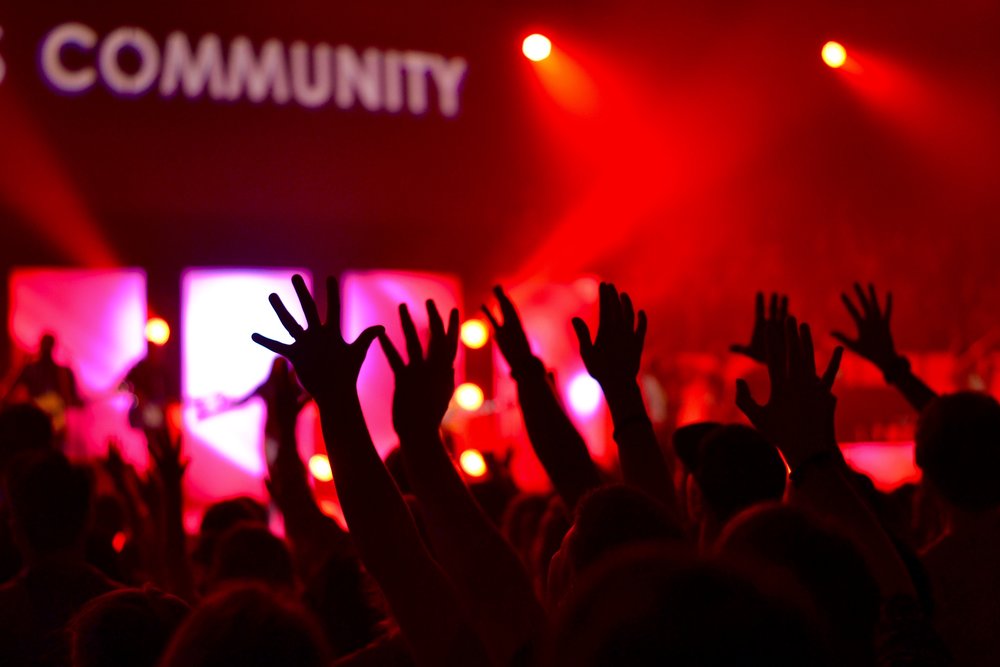I used to think people who raised their hands in worship were weird. I grew up in Baptist churches in the Midwest, where the two or three people who occasionally raised their hands while singing a hymn or worship song were looked upon with some suspicion.
For most of my life I was all about belting out the hymns and songs, singing my heart out to God, closing my eyes in devotion. But hand raising? I wouldn’t dare.
But a few years ago when I started to attend a Reformed Charismatic church in Southern California, things started to change.
Most people in this church raised their hands in worship. Some tentatively. Some “half mast.” Some both-hands-in-the-air-most-of-the-time. People like me, who sang passionately but didn’t ever do anything with their hands aside from occasional claps, were in the minority.
At first I was stubborn about it. This is just who I am and that is who they are, I thought. I was not about to start doing it out of peer pressure or to “fit in” with the church culture. We all have our preferred styles, I told myself, and I am not a hand-raiser.
But it’s been five years since then, and now I am a full-fledged, both-hands-in-the-air-most-of-the-time charismatic hand raiser.
How did it happen?
It started with a posture change. I moved from being highly self-conscious in worship to being more conscious of Jesus and the presence of God. I set aside my comfort and cultural preferences and just gave myself over to the singing time. Ever so tentatively, I started experimenting with raising my hands.
Sometimes my heart wasn’t in it at all. Many times I was (gasp!) “faking it” and “going through the motions.” But the interesting thing about going through bodily motions is that they eventually become second nature, physical postures that come to intertwine with and form the heart posture, even if at first the heart isn’t in it. “Fake it until you make it” is, funnily enough, often how we change. In my case, habits of hands cultivated desires of the heart.
The physical posture of raising hands in prayer and worship shaped me to be less self-conscious and more able to release and surrender to the Spirit. I think it also helped cultivate in me a needed sense of humility and a healthy fear of God rather than fear of man.
Was the process of becoming an avid hand-raiser awkward and uncomfortable? YES, for the first few years at least. And it is still awkward and uncomfortable, especially when I’m visiting non-charismatic churches or worshiping in contexts where it’s less common. I now find myself struggling to not raise my hands at least a little bit when I sing and pray in worship.
There is a long tradition of hand-raising, often called the orant posture, in Christian worship. Hands raised in prayer was common in the early church, and in most early Christian art, believers are depicted in the orant position. You can see it today if you visit the Christian catacombs in Rome. The picture here is from an early Christian relief fragment at Santa Maria in Trastevere in Rome, which I had the pleasure of visiting this past December.

Charismatics didn’t invent the hand-raising posture. It’s been around for a long time, an embodied posture that connects Christians across the centuries as much singing or kneeling or eating and drinking the communion elements.
Is hand-raising in worship a biblical mandate? No. Can it become ritualistic in an unhealthy, demonstrative way? Yes. But those are not reasons to refrain from trying it.
Do I still think hand-raising in worship is weird? Yes. But there are a lot of weird things about Christianity, and the list is only getting longer in our post-Christian culture. Why not embrace the weirdness and lift up holy hands (1 Tim. 2:8) in prayer and praise of the God we serve?

